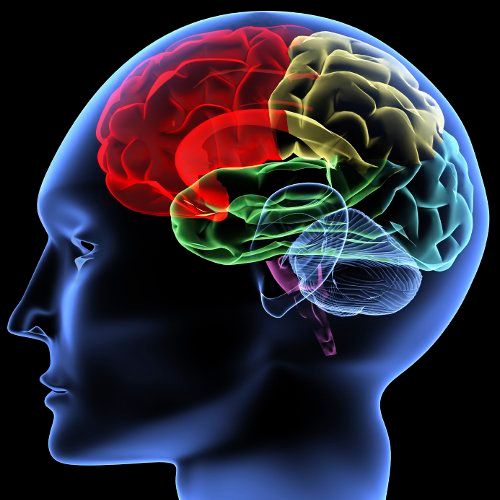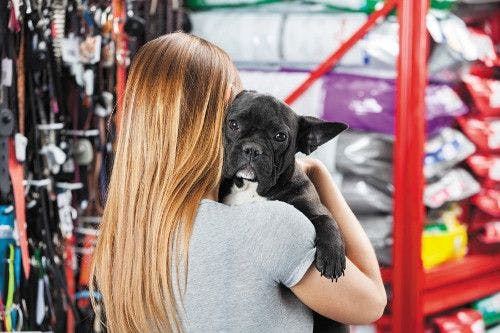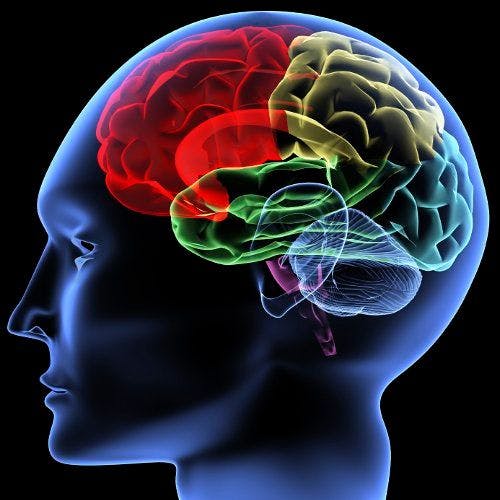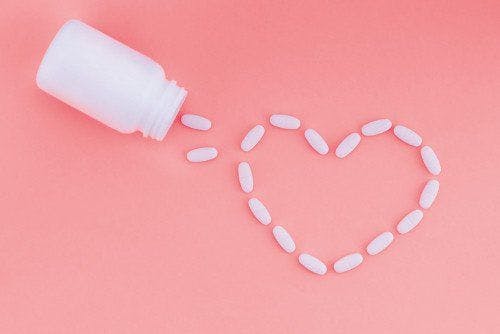Lutein Research Expands Beyond the Eye, to Brain Health and Skin Health
Research on lutein continues to unveil benefits for eye health as well as in emerging interest areas like brain and skin health, expanding its consumer base from old to young.
Photo © iStockphoto.com/Yakobchuk

Just like a wedding photographer or a landscape architect, a nutritional ingredient can gain a real market advantage when it specializes. Look no further than the carotenoid lutein, which may come closer than any other to being a household name thanks to its widely publicized-and even more widely substantiated-association with ocular health.
And yet the more we learn about just how embedded-literally-lutein is with healthy vision, the more evidence we uncover that its benefits redound elsewhere. And that should open up eyes to lutein’s benefits well beyond its traditional base of-let’s be honest-older fans.
As Brian Appell, marketing manager for OmniActive Health Technologies (Morristown, NJ), puts it, “Right now, lutein’s primary driver is consumers concerned about age-related conditions like macular degeneration. But new studies on lutein are showing that it has benefits in other fast-growing categories, like brain health, sports nutrition, skin health, and sleep. This new science is expected to increase demand in different consumer segments.” And it should signal a bright future for lutein and those who use it.
The Eyes Have It
Ceci Snyder, MS, RD, global vision product manager, human nutrition & health, Kemin (Des Moines, IA), shares Appell’s bullishness. “The more you know about lutein, the more amazed you are at its potential to help at all ages,” she says. “Based on the number of new products that cross age groups and body systems, interest in lutein beyond eye health is growing.”
That’s growing lutein’s sales, as well, with the ingredient’s global take expected to rise at a CAGR of 6.3% from 2017 to 2022, topping out above $350 million by the end of that timeframe, according to a report1 by MarketsandMarkets.
But despite lutein’s spread into untapped systems and need states, its calling card remains its reputation for ocular support. For it’s here, Appell says, where “the science on lutein is most well established.”
What that science tells us is that of the 600-plus carotenoids found in nature, only three-lutein and the zeaxanthin isomers RR-zeaxanthin and RS (meso)-zeaxanthin-congregate in the eye, forming a protective layer in the macula, a structure located in the rear of the eye that’s responsible for clarity in the direct field of vision.
But while the macula is the part of the retina most involved in high-level visual performance, it’s also the part most susceptible to photo-oxidative damage as a result of its continual exposure to high-energy light-particularly light with a wavelength in the blue portion of the spectrum.
And this is where lutein and zeaxanthin-collectively known as macular carotenoids-come in. As Appell explains, they “play two primary roles in the eye.” One, they quench the free radicals that flood the eye subsequent to photo-oxidation. And, two, they filter some of the high-energy blue-wavelength light that causes the most damage. Given these defensive actions, Appell concludes, “the more macular carotenoids you can build up in the macula, the greater the protection for the eye and ability to see clearly.”
Arresting AMD
How this plays out with respect to cataracts and age-related macular degeneration (AMD)-present in its advanced stage in 2.1 million Americans age 50 and older and likely to affect one in 10 Americans by the time they turn 80, according to the National Eye Institute of the National Institutes of Health2-has long been a topic of inquiry.
As Snyder notes, results of the Age-Related Eye Disease Study 2 (AREDS2)3 showed that in subjects with the lowest dietary intake of lutein and its carotenoid cousin zeaxanthin, supplementation with the two macular pigments reduced the risk of progression to advanced AMD by 26% above the effects of the supplement formula used in the earlier AREDS study, which didn’t include lutein and zeaxanthin. In the dietary supplements industry, lutein and zeaxanthin are most often commercially sourced from the marigold flower.
“Based on that study,” she says, “the National Eye Institute recommended adding 10 mg lutein and 2 mg zeaxanthin to the AREDS formula.” Study results also show that subjects supplementing with both lutein and zeaxanthin saw a significant reduction in risk of progression to cataracts or cataract surgery compared to those who took no lutein and zeaxanthin4.
Blue Alert
While the role of lutein and zeaxanthin in the AREDS results has been shaping opinions and interventions vis-Ã -vis eye health for years, Appell notes that “there’s new science on how the macular carotenoids can protect against the more immediate effects of exposure to high-energy blue light.”
This matters because blue light is a primary emission product not only of electronic device screens-think laptops, mobile phones, and even old-fashioned televisions-but of now-ubiquitous LED and compact-fluorescent lights, as well. And, says Shaheen Majeed, worldwide president, Sabinsa (East Windsor, NJ), supplier of lutein-plus-zeaxanthin ingredient ZeaLutein, “Studies have shown that higher exposures to blue light is damaging to your eyes-particularly to the retina.”
“In this digital era,” Majeed continues, “as people spend considerable time every day with their devices, they’re experiencing the eye fatigue, eye strain, and headaches collectively termed ‘computer vision syndrome.’ The problem arises from uninterrupted focusing on a computer or mobile display for a prolonged period. And though it’s temporary in nature, it can seriously influence visual acuity in the long run.”
Fortunately, research shows that the higher the level of macular pigment optical density (MPOD)-which Snyder describes as “a measure of lutein and RR-zeaxanthin status in the eye”-the greater the protection against excess blue light.
Appell notes that the BLUE (Blue Light User Exposure) study5, which explored how macular carotenoids can protect against the effects of the blue spectrum, found that supplementing with OmniActive’s Lutemax 2020 (containing 20 mg lutein and 4 mg RR- and RS-zeaxanthin) yielded a statistically significant decrease in symptoms of computer vision syndrome, including an almost 30% reduction in eye strain, eye fatigue, and headache frequency.
“These study results,” he says, “have implications across all age groups and offer a simple, effective solution to protect the eyes from daily exposure to digital screens.” And because most people don’t consume enough lutein and zeaxanthin from natural sources like green leafy vegetables, supplementation, he says, “is the only way to get sufficient levels of these important nutrients.”
Snyder agrees. “Consumers might not be aware of the connection” between screen time and downstream deleterious effects. But lutein suppliers are getting the message out. “Based on the prevalence of digital devices and the likelihood of continued use even after learning about blue light,” she adds, “we see opportunities for brands to develop products for all demographic profiles.”
Food (and Supplements) for Thought
“Vision will always play a big role in the lutein market because-well, vision loss is a top concern, and the macular carotenoids are critical components in protecting eyes,” Appell says. “The challenge has been bridging the importance of lutein to a younger consumer who isn’t necessarily supplementing to prevent a condition like AMD.”
With supplier efforts like clinical research and marketing campaigns, he continues, “We’re seeing the momentum build as consumers understand how lutein and the macular carotenoids help protect not only their eyes well into old age, but also how it can have more immediate effects that [these consumers] want to address.”
Take improved cognition. Turns out that lutein’s ability to promote eye health underscores how it helps nearby structures in the brain. As Snyder explains, “The connection between the proximity of retinal tissue, the optical nerve, and brain tissue allows for brands to explain the similar role that lutein plays in different parts of the body.”
Indeed, “Lutein’s role in the brain is an exciting area of growing research,” she says. “Observational studies6 provided the foundation for interest, such as looking at the relationship between MPOD and temporal processing speed as a marker of central nervous system health.”
Last year saw publication of results from two intervention studies7,8 showing, respectively, that Kemin’s FloraGLO lutein and ZeaONE natural zeaxanthin ingredients support neural response and blood flow to specific areas of the brain in healthy older adults, and that supplementation with the two carotenoids improves cognitive function in healthy older adults as measured by complex attention and cognitive flexibility.
Appell points to a study showing that subjects taking OmniActive’s Lutemax 2020 supplement exhibited higher levels of brain-derived neurotrophic factor (BDNF), a protein that participates in neuroplasticity-“the ability to grow and differentiate the growth of neurons,” he says-as well as in learning, memory, and cognition. The Lutein, Vision, and Mental Acuity II (LAMA II) study9 also showed the supplement’s effects on lowering cortisol levels, which are associated with stress, by 50% and in producing higher scores on subjects’ health-status questionnaires.
Skin Deep
Just as lutein collects in the macula to protect it against the effects of photo-oxidation, it’s selectively deposited in the skin to perform a similar service.
In 2016, OmniActive launched the Beautiful Skin Forever study10 to examine the role of Lutemax 2020 in skin health and found that supplementation with 10 mg for 12 weeks “demonstrated a rare combination of benefits,” Appell says: increases across the board in overall skin tone, lightening, and elasticity, and an increase in the minimal erythema dose (MED), a measure of how much UV light is needed to elicit a burn response. A higher MED means greater sun protection. And unlike other carotenoids, Appell says-think beta-carotene-Lutemax 2020 doesn’t produce carotenoderma, the supplement-induced yellowing of the skin.
“Consumers are looking for whole-body approaches to skin and beauty, as with collagen and similar supplements,” Appell says. “Even though this is a new category for lutein, it’s unique because it addresses some of the big concerns consumers have-skin tone and sun protection, to name a few. This is a major benefit for the beauty-from-within category.” And it’s a major benefit to consumers who are discovering all that lutein can do.
Also read:
The Blue-Light Message: Explaining the Benefits of Lutein and Zeaxanthin
Lutein and Zeaxanthin Benefit Young and Old Alike
Tomato, Rosemary, and Lutein May Play Synergistic Role in Promoting Eye Health, Study Finds
References:
- “Lutein Market by Form (Powder & Crystalline, Oil Suspension, Beadlet, Emulsion), Source (Natural, Synthetic), Application (Food, Beverages, Dietary Supplements, Animal Feed), Production Process, and Region - Global Forecast to 2022.” MarketsandMarkets, December 2017.
- “Age-Related Macular Degeneration” information page. https://www.nei.nih.gov/eyedata/amd
- Age-Related Eye Disease Study 2 Research Group. “Lutein + zeaxanthin and omega-3 fatty acids for age-related macular degeneration: the Age-Related Eye Disease Study 2 (AREDS2) randomized clinical trial.” Journal of the American Medical Association, vol. 309, no. 19 (May 15, 2013): 2005-2015
- Age-Related Eye Disease Study 2 Research Group. “Lutein/zeaxanthin for the treatment of age-related cataract: AREDS2 randomized trial report no. 4.” Journal of the American Medical Association, vol. 131, no. 7 (July 2013): 843-850
- Stringham JM et al. “Macular carotenoid supplementation improves visual performance, sleep quality, and adverse physical symptoms in those with high screen time exposure.” Foods. Published online June 29, 2017.
- Hammond B et al. “CFF thresholds: relation to macular pigment optical density.” Ophthalmic and Physiological Optics, vol. 25, no. 4 (July 2005): 315–319
- Lindbergh CA et al. “Lutein and zeaxanthin influence brain function in older adults: a randomized controlled trial.” Journal of the International Neuropsychological Society, vol. 24, no. 1 (January 2018): 77-90
- Hammond BR et al. “Effects of lutein/zeaxanthin supplementation on the cognitive function of community dwelling older adults: a randomized, double-masked, placebo-controlled trial.” Frontiers in Aging Neuroscience. Published online August 3, 2017.
- Stringham JM et al. “Supplementation with macular carotenoids reduces psychological stress, serum cortisol, and sub-optimal symptoms of physical and emotional health in young adults.” Nutritional Neuroscience, vol. 21, no. 4 (May 2018): 286-296
- Juturu V et al. “Overall skin tone and skin-lightening-improving effects with oral supplementation of lutein and zeaxanthin isomers: a double-blind, placebo-controlled clinical trial.” Clinical, Cosmetic and Investigational Dermatology. Published online October 7, 2016.






















